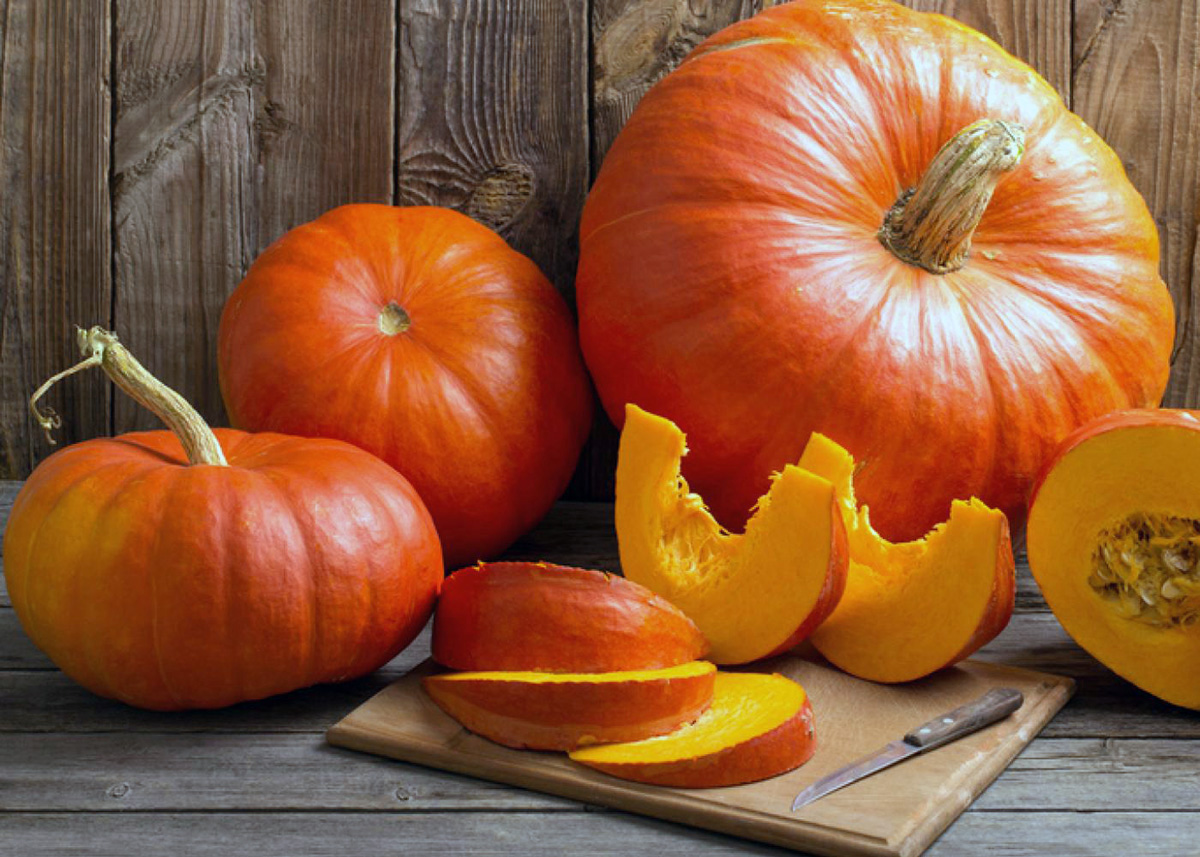
By Kayla Colgrove, MS, RDN, ACSM-CPT, Extension Educator, Lancaster County
Many people kick off fall by enjoying a pumpkin spice food item or beverage and many of those contain extra calories, fat and added sugar.
Pumpkin is a great way to add flavor and extra nutrition to recipes. It has many nutritional benefits and is naturally lower in calories and fat free. It is an excellent source of vitamin A which helps support healthy eyesight and immune system functions. Pumpkin is also a good source of vitamin C, which supports a healthy immune system, heals wounds, and keeps teeth, bones and gums healthy.
HOW TO USE FRESH PUMPKIN IN RECIPES
Did you know the variety of pumpkin makes a difference? Recipes turn out the best when you choose sweet, sugar or pie pumpkins instead of jack-o’-lanterns that have stringier pulp. Follow one of these methods when preparing your pumpkin for recipes (Source: Buy Fresh Buy Local — Pumpkins & Squash):
• Baked Fresh Pumpkin: Preheat oven to 350°F. Cut the pumpkin in half and clean out the seeds and strings. Cover a baking sheet with tin foil. Brush melted butter on the cut edges of the pumpkin and place the sides cut side down on the cookie sheet. Cook approximately 1 hour or until pumpkin is soft. Cool. Remove the pumpkin skin and cut into pieces and blend or put through a food processor until the mixture is smooth like canned pumpkin.
• Boiled Fresh Pumpkin: Remove the seeds and strings. Peel and cut the pumpkin into chunks and place them in a large pan. Bring to a light boil. Cook until tender. Cool. As with the baked method, blend or food process the pumpkin until smooth.
• Microwaved Fresh Pumpkin: Remove the seeds and strings. Cube with the rind on and place cubes in a microwave safe bowl and cover loosely with paper towels or plastic wrap. Cook on medium until soft. Check every 5 minutes as microwave times vary. Once cubes are cooled, peel off the rind. Blend or food process until smooth just as in the other methods. You can refrigerate your fresh pumpkin puree for up to 3 days, or store it in the freezer up to 6 months, enabling you to enjoy “fresh” pumpkins for months to come.
HEALTHIER PUMPKIN RECIPES
By adding pumpkin to recipes you make, you can control the ingredients, nutrition and know what you are eating. Choose recipes lower in calories, saturated fat and sodium, and higher in whole grains, dietary fiber and vitamins and minerals. You can add pumpkin puree or canned pumpkin to many recipes. Have you tried pumpkin in muffins, oatmeal, smoothies, pancake batter or even chili?
Try making Mini-Pumpkin Spice Oatmeal Muffins at home (see recipe in this e-newsletter).
Sources:
• Produce for Better Health Foundation. Pumpkin. https://fruitsandveggies.org/fruits-and-veggies/pumpkin
• Centers for Disease Control and Prevention. Micronutrient Facts. https://www.cdc.gov/nutrition/micronutrient-malnutrition/micronutrients
• Food Fun for Young Children Newsletter. Fall Pumpkin Fun! https://food.unl.edu/Family-Fun/Fall%20Pumpkin%20Fun%20with%20pancakes2.pdf
• Buy Fresh Buy Local. Pumpkins & Squash. https://food.unl.edu/documents/Albrecht%20Buy%20Fresh%20Buy%20Local%20Pumpkins%20&%20Squash.pdf